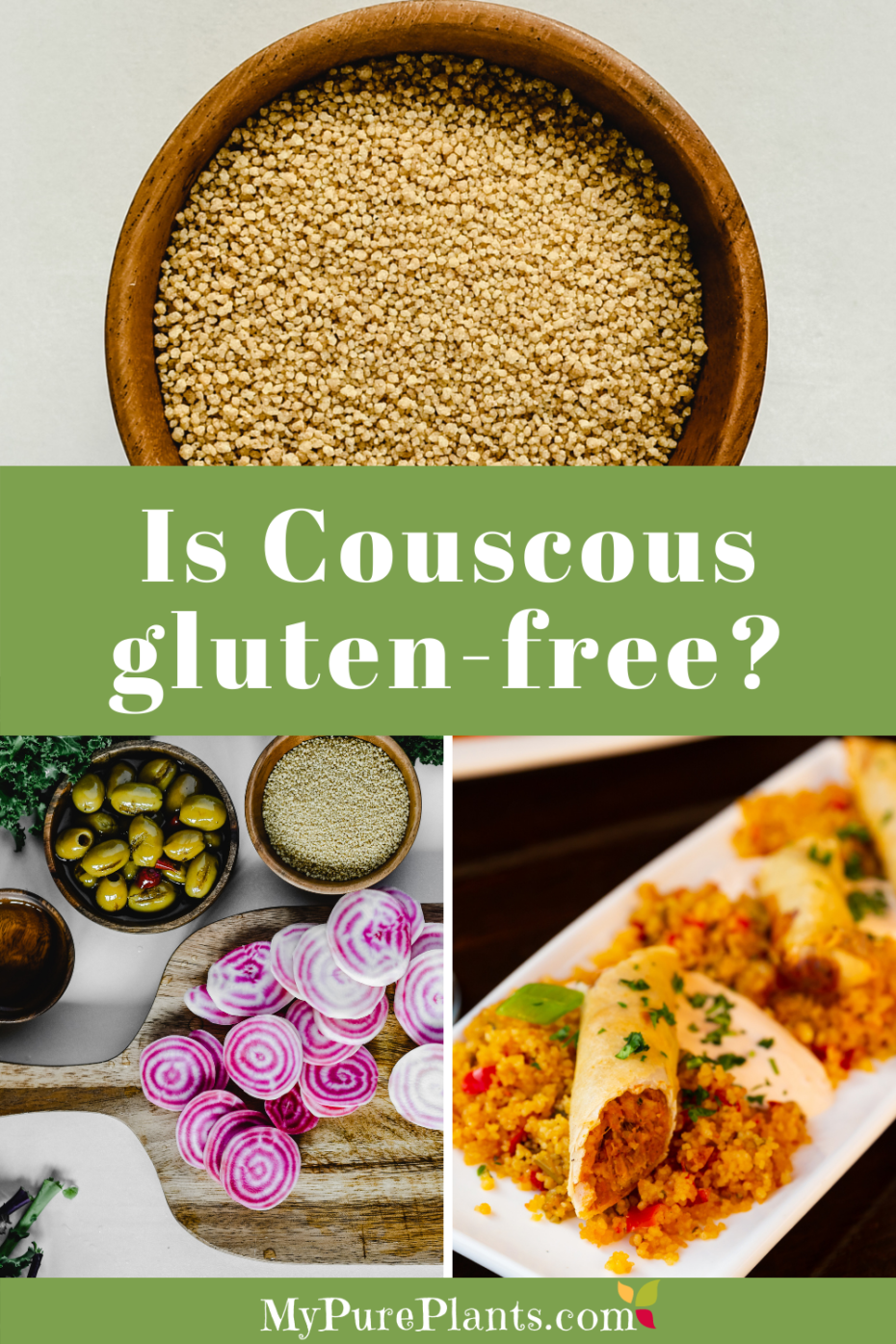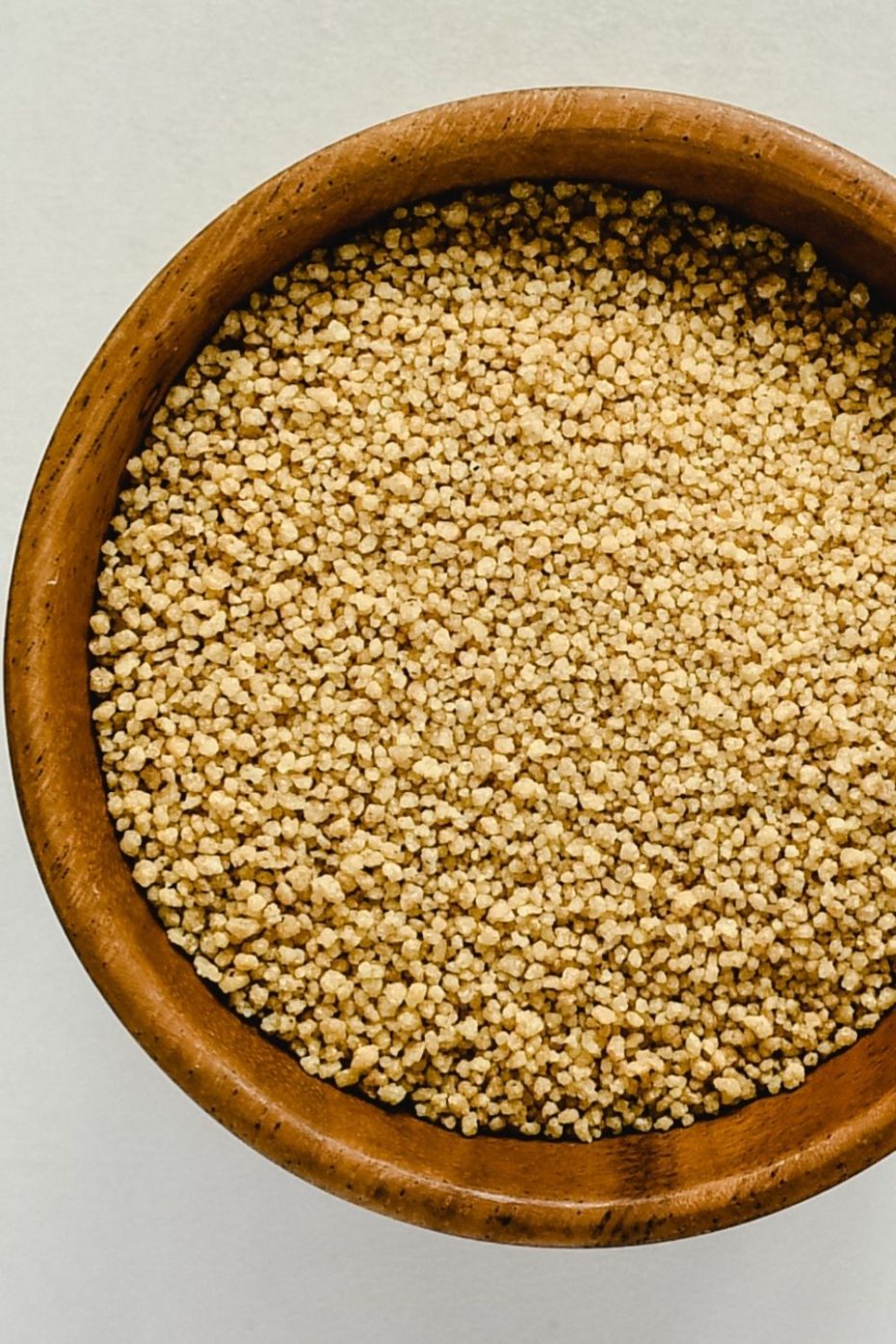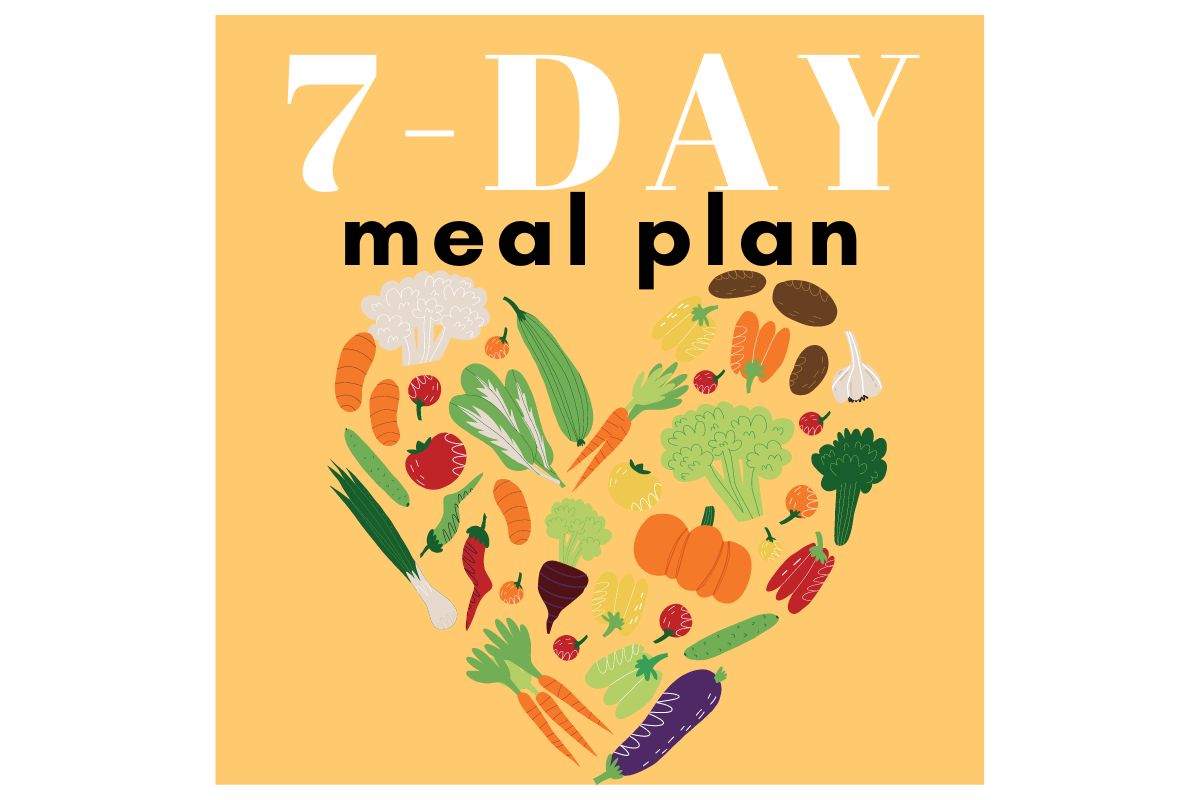Have you ever wondered whether couscous is gluten-free? Sadly, the short answer is “NO”. However, we found several wonderful gluten-free couscous alternatives that you can try. We also collected a list of gluten-free couscous brands whose products try their best to mimic the texture to the T.

Want to save this post?
Enter your email below and get it sent straight to your inbox. Plus, I’ll send you budget recipes and money-saving tips every week!
Is couscous a grain to avoid?
It surely looks like a grain, isn’t it? Couscous is a well-known traditional staple of the North African cuisine. Being it so small, couscous is mistaken for grain a lot, but it is actually a small-cut pasta like Italian orzo (also known as risoni or risi).
What is couscous made of?
Couscous is usually made of semolina flour of durum wheat or rarely barley and water.
I saw a very detailed and interesting video on How is Couscous Manufactured. In short, they mix the semolina flour with water to make a grainy raw dough. Then they transfer it to a special rotating machine to shape the dough into tiny balls. After that the balls are steam cooked, then dried, then cooled down so they can be packaged. That’s it. Here is another video on How to Make Couscous by Hand. It looks like a super labor-intensive and long process though.
Is couscous gluten-free?
Sadly no, couscous is NOT gluten-free. Why? The main or actually the only ingredient of couscous is durum wheat semolina flour. Semolina is actually the by-product of making wheat flour. It is the leftover course flour after wheat grains have been grind. And sadly, wheat is the No.1. gluten-containing grain to avoid if you follow a gluten-free diet.

The best gluten-free couscous alternatives
Gluten-free grains
Couscous is usually served as a side dish next to a main course meals, but it can also be added to salads, Buddha bowls, stir fries as well as to soups and stews. Despite it not being a grain, couscous is often confused as one. So, the easiest way to find a gluten-free substitute is looking around among the gluten-free grains. Our top 3 gluten-free couscous alternative are
- Millet* is the closest in terms of how couscous looks and taste like. Millet is also tiny and round-shaped. I use it in a lot of different dishes like in this Vegan Bean Chili recipe.
- Fonio* is an ancient grain from West Africa that is very similar to couscous. It is used in pilaf, tabbouleh, and other recipes as couscous alternative.
- Short-grain brown rice* has a somewhat different shape, but it is such a staple side dish in so many cultures and cuisines. If you want to enjoy traditional Middle Eastern or North African dishes that call for couscous, you can use rice instead.
Here is a list of gluten-free grains which is a bit further in terms of texture and taste but still can be a good alternative if you have them on hand.
- Quinoa* is technically not a grain but pseudo-cereal. It is even smaller than millet or couscous itself, but can be a great high-protein alternative. I use it in this Quinoa Sweet Potato Chili and in this Quinoa Berry Salad.
- Sorghum* is very similar-looking to millet. It is small, yellow, round-shaped. It is not easy to find in local stores. You might need to se a specialty store to buy it.
- Buckwheat* is another pseudo-cereal you might heard of it as “kasha”. It is larger in size and has a distinct flavor. I would not use it on its own as a side dish, but maybe mix it with rice or millet. I use it to make Flourless Tortilla.
- Amaranth* is one of the tiniest seeds I have ever seen. It looks like teeny tiny balls. I would not use it on its own as a side dish, but maybe mix it with rice or millet.
- Teff* is also a super tiny seed from Ethiopia. It also has a distinct flavor which is harder to mask. I would mix it with other grains.
Riced vegetables
The next category is riced vegetables. There are some veggies you can turn into a rice-like texture. While it is similar to couscous in terms of texture, you will be able to taste that it is a vegetable indeed. It is very easy to make if you have a food processor. Pulse the raw vegetable a couple of times until you get a grainy, minced texture. You can steam it or use a microwave to cook it until soft. The most popular riced veggies are:
- Cauliflower “rice”
- Sweet potato “rice”
- Beetroot “rice”
- Broccoli “rice”
- Carrot “rice”
Gluten-free couscous brands
We also found a handful of brands producing gluten-free couscous that try to mimic the texture and taste with more or less success.
We would like to note here that as per FDA’s labelling rule, if the packaging labelled as “gluten-free” that means cross-contamination can only happen with less than 20 ppm, which is an amount that has been deemed safe by celiac disease experts.
(The links with * leads to Amazon, where I get a small commission after purchases with no extra cost to you.)
- Gefen* – It is made of potato starch, eggs, palm oil and salt. It is labelled gluten-free, but not vegan.
- Goldbaum’s (Glutenfreeshoppe.com) – The ingredients are potato/tapioca starch, potato flakes, pasteurized egg white, emulsifier (mono glycerid of palm oil), stabilizer, xanthan gum, spices (tumeric, paprika). It is labelled as gluten-free, but sadly not vegan.
- Liebers (Glutenfreeshoppe.com) – The ingredients are potato starch, potato flour, salt, potato flakes, palm oil, WHOLE EGGS, spices, parsley flake. I couldn’t find information whether it is labelled gluten-free or not. But it is definitely not vegan.
- Lundberg (Glutenfreeshoppe.com) – The only ingredient is organic roasted brown rice. It is labelled as gluten-free and vegan.
- Meshuba (Walmart) – The ingredients are potato/tapioca starch, potato flakes, pasteurized egg albumin, emulsifier (monoglyceride of palm oil), stabilizer – xanthan gum, spices. It is labelled gluten-free, but not vegan.
- Nayama* – It is a cassava-based couscous with cassava semolina flour as the only ingredient. It is also labelled gluten-free.
- Streits* – The ingredients are potato/tapioca starch, potato flakes, pasteurized egg white, emulsifier (monoglyceride of palm oil), stabilizer – xanthan gum, spices. It is labelled gluten-free, but not vegan.
- Thiere Tiere* – It is a millet-based couscous with millet flour as the only ingredient. It is not labelled as gluten-free and I did not find any further info about cross-contamination.
If you are in the UK, you can find gluten-free couscous brands like Tesco, Asda or Clearspring. Here is a great review of the first two.
Gluten-free couscous recipe
You can also try making gluten-free couscous at home. As you can see from the brand list above couscous can be made from rice, corn, millet, potato starch, tapioca starch, and even cassava. Here is a Gluten-free Couscous recipe using cornmeal (aka polenta / grits).
More gluten-free pantry essentials
You can browse through our List of 90+ Gluten-free Flours or check out



Clark
Suzie’s brand made a pea and a lentil couscous. Both very good. They stopped making it around the start of covid, but with some encouragement, they may start again. Both were great products! Gluten free, organic, high in protein, and fluffy.